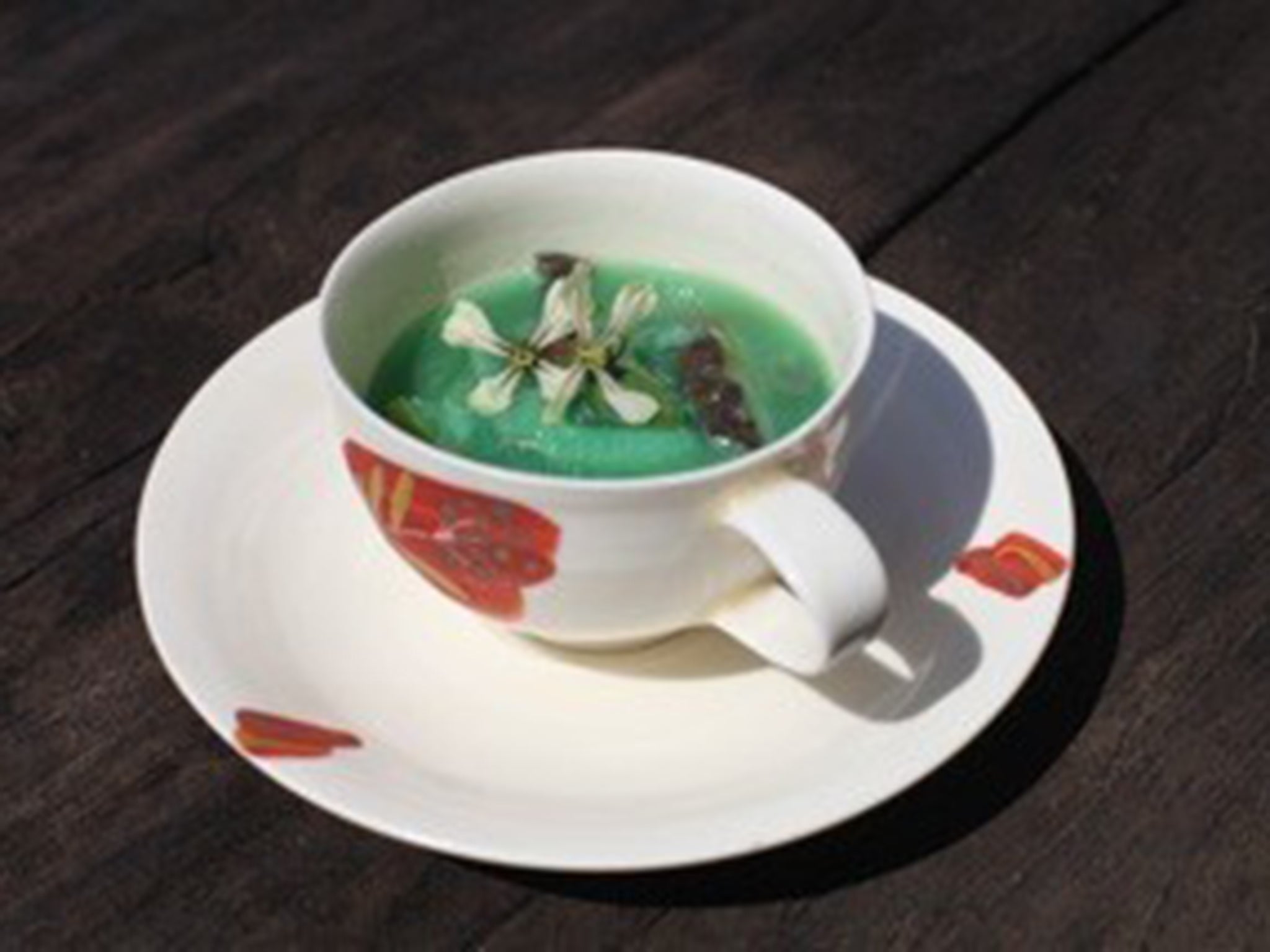Would you eat Fukushima soup? Frieze visitors queue up to risk 'delicious' yet possibly toxic radish broth
Londoners show solidarity with the worst nuclear disaster since Chernobyl by putting themselves at risk from (conceptually) radioactive broth

Your support helps us to tell the story
From reproductive rights to climate change to Big Tech, The Independent is on the ground when the story is developing. Whether it's investigating the financials of Elon Musk's pro-Trump PAC or producing our latest documentary, 'The A Word', which shines a light on the American women fighting for reproductive rights, we know how important it is to parse out the facts from the messaging.
At such a critical moment in US history, we need reporters on the ground. Your donation allows us to keep sending journalists to speak to both sides of the story.
The Independent is trusted by Americans across the entire political spectrum. And unlike many other quality news outlets, we choose not to lock Americans out of our reporting and analysis with paywalls. We believe quality journalism should be available to everyone, paid for by those who can afford it.
Your support makes all the difference.Visitors to this year's Frieze art fair have been won over by soup so delicious nobody seems to care that it is made from potentially radioactive radishes.
Huge queues of willing guinea pigs have been lining up to taste the soup (which is doled out for free) for the past three days at the London art fair.
The installation, Does This Soup Taste Ambivalent?, is by Japanese conceptual artists United Brothers who hail from the tsunami and earthquake hit prefecture of Fukushima.
Despite assurances that the vegetables are safe to eat, the artists are offering the public the conceptual possibility that they are toxic.
The duo believe that food “represents hospitality, sharing and humanity” so, by partaking in the soup, the public can show solidarity with the victims of the Fukushima disaster. They want to see if individuals outside Japan would risk their well-being for such a gesture.

“It’s one of those projects where you don’t know if there is going to be a huge queue or whether no one is going to go near it,” Frieze director Matthew Slotover told The Independent in September.
But the Regent's Park art fair apparently attracts a brave bunch. Contemporary Art Society curator Robert Dingle enjoyed the soup so much on Wednesday he went back for seconds the following day.
“Before trying the soup I did watch to see if anyone else was eating it,” Dingle said. “Once I could see that other people were enjoying it I thought I’d give it a try.”
Dingle says the soup tastes “absolutely delicious” and is a greenish brown colour rather than the toxic green of the press photos in Frieze’s catalogue (above).

“I don’t know exactly what the base is but it might be a miso. It seemed to change the second time I had it and had something interesting floating it in it – I’m not quite sure what , maybe a crab stick?” he said.
A slightly apprehensive Guardian columnist, Sophie Heawood , was disappointed to find that all the free soup had run out by the time she got there. After managing to get hold of a cup she found the soup so “delicious” that she necked the whole thing in one go. “At the time of going to print, I am not yet dead,” she writes
Regardless, United Brothers Ei and Tamoo Arakawa (the former is an internationally renowned artist, the latter owned several tanning shops prior to the Fukushima disaster) and Frieze have made assurances that the soup is safe and the radishes are approved by the Japanese Farmers’ Association.
Asked if he was worried, Dingle said: “I trust Frieze when they tell me it is safe…I will keep you posted if I start to develop any extra limbs.”
The 12th Frieze Art Fair in London’s in Regent’s Park finishes tomorrow. It involves 160 contemporary art galleries, while its sister fair Frieze Masters, concentrates on historical art.
Other notable works this year include the Hauser & Wirth stand, where Turner Prize-winner Mark Wallinger has recreated Sigmund Freud’s London study; and the Gagosian gallery’s children’s playground installation by Carsten Höller.
Join our commenting forum
Join thought-provoking conversations, follow other Independent readers and see their replies
Comments